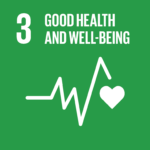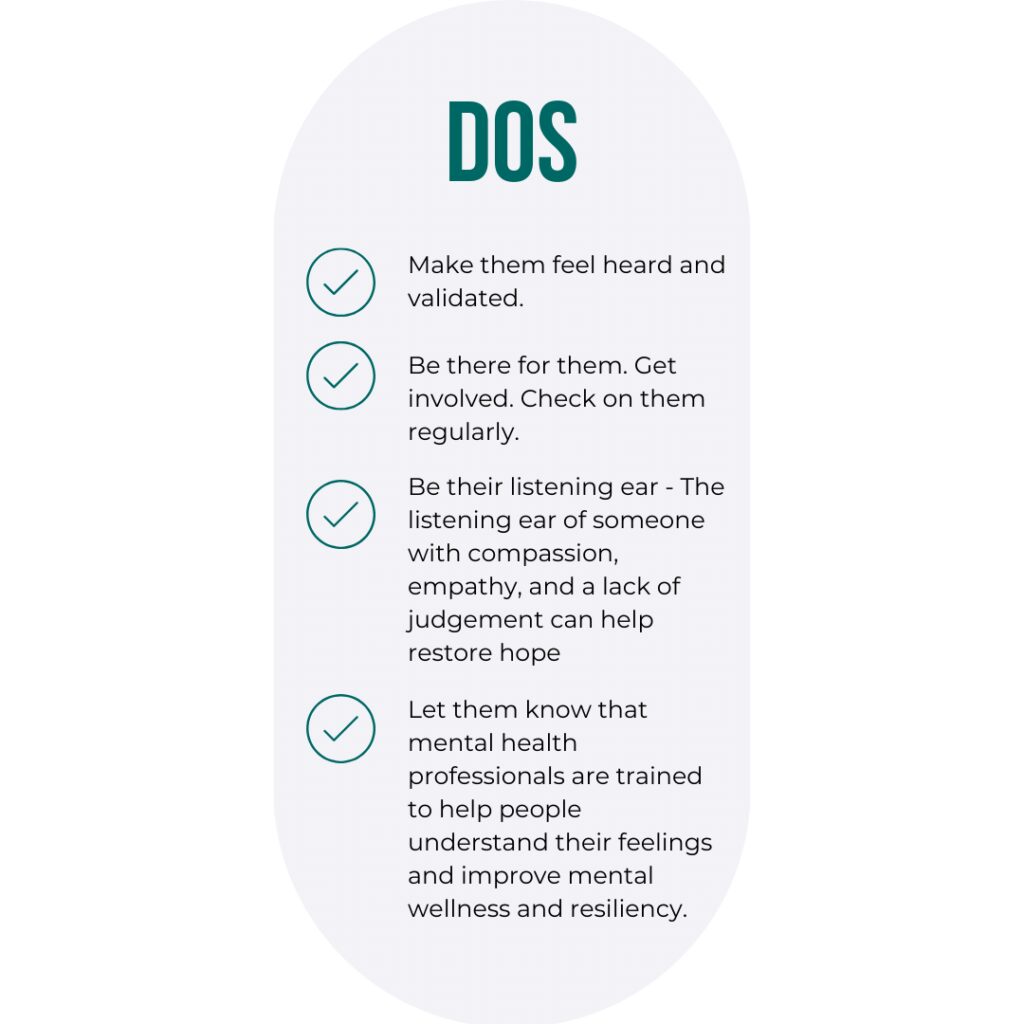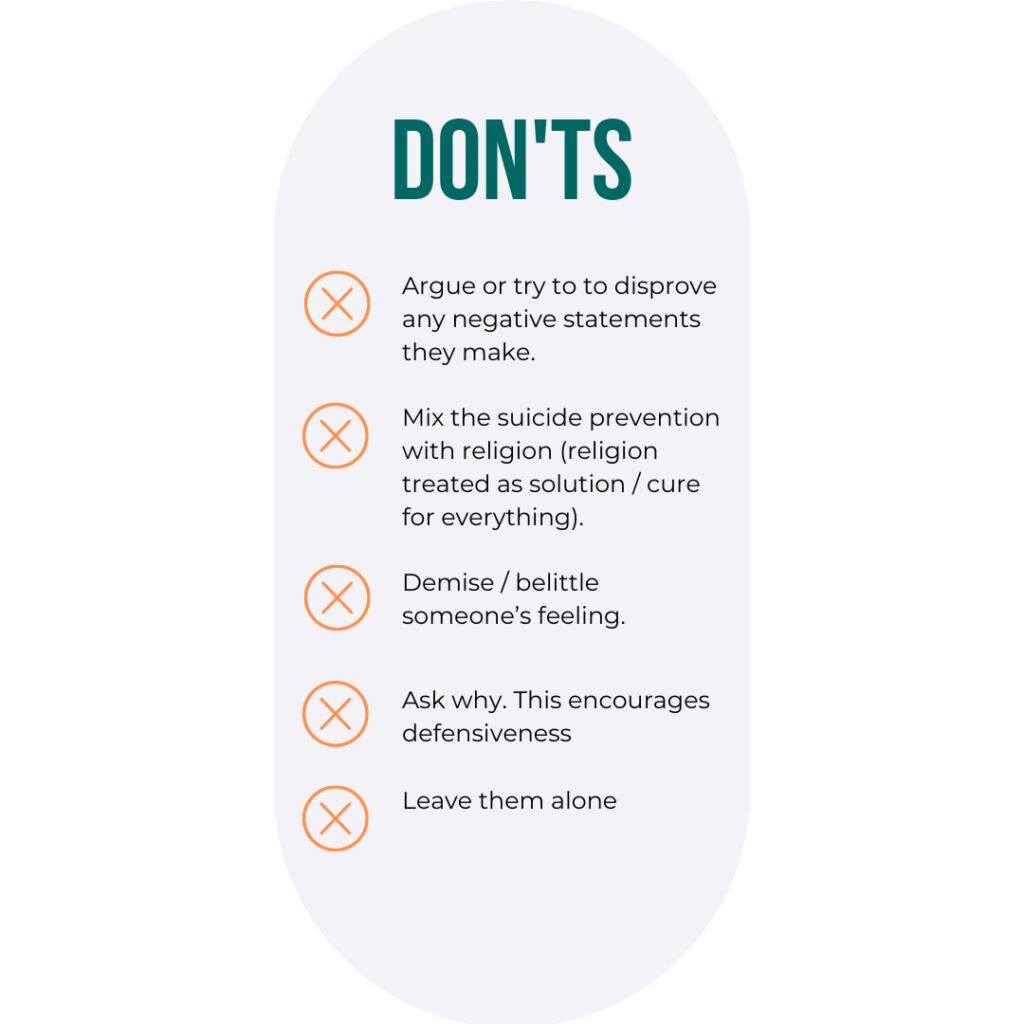Suicide prevention requires the efforts of many. Through action, you can make a difference to someone in their darkest moments. Hope is real; help is real. No one fights alone.
Suicide remains one of the leading cause of death worldwide. According to WHO’s latest estimates, published in “suicide Worldwide in 2019”, every year, more people die as a result of suicide than HIV, malaria or breast cancer or war or homicide. In 2019 alone, prior to pandemic, more than 700 000 people died by suicide. It is one in every 100 death.
RELEVANT SUSTAINABLE GOALS

SUICIDE PREVENTION MONTH
September is Suicide Prevention Month. This critical month now carries extra weight, given the pandemic. In addition, the polarization of politics and our race relations have caused an incredible amount of stress and trauma on many worldwide.
Suicide Prevention Month is a time for advocates, professionals, and every public member to bring suicide prevention awareness to the forefront. It is even more important now, after many months living with the COVID-19 pandemic, with many of the risk factors for suicide ̶ job loss, financial stress, and social isolation – still very much present.
We need to continue ending the stigma so that conversations around mental health and suicide are normalized. This type of normalization will also foster a community where people become more comfortable sharing when they are struggling with mental health or suicidal thoughts and, more importantly, reach out for the help they may need.
Don't tell someone to get over it. Help them get through it
Sue Fitzmaurice
THE GENDER PARADOX OF SUICIDE : ATTEMPTS & RISK OF DEATH
According to WHO data, More than twice as many males die due to suicide as females (12.6 per 100 000 males compared with 5.4 per 100 000 females). Suicide rates among men are generally higher in high-income countries (16.5 per 100 000). For females, the highest suicide rates are found in lower-middle-income countries (7.1 per 100 000).
In other official statistics and research studies, there are some gender differences in suicide. For example, while women are more likely to experience suicidal thoughts, men are more likely to take their own lives. Complicating the issue is that much of the research on this topic doesn’t include non-binary people.
Suicide statistics reveal that women are roughly three times more likely to attempt suicide, though men are two to four times more likely to die by suicide. Compared to men, women show higher rates of suicidal thinking, non-fatal suicidal behavior, and suicide attempts. Men, on the contrary, tend to have fatal suicidal behavior, more likely to be complete suicides before anyone can intervene.
This starking difference in attempts and completed suicides in women have erroneously led many people to believe that suicide attempts in women are often a method of getting attention rather than serious risk. This is far from true. It is important to note that among women, and attempted (but failed) suicide attempt is the most significant risk factor for suicide in the future.
Men and women differ in their roles, responsibilities, status, and power, and these socially constructed differences interact with biological differences to contribute to differences in their suicidal behavior. Understanding these gender differences can help experts better design and develop prevention and intervention strategies. All suicide attempts, whether in men or in women, need to be taken very seriously
THE DISTURBING TREND OF TEEN DEPRESSION AND SUICIDE : A SILENT CRISIS
Call us an alarmist, but the rate of teen suicide is increasing. The reality is that adolescent depression is a severe problem, and teen suicide is increasing. Even before the covid-19 pandemic, youth suicide was already at a record high.
Globally, the World Health Organisation data shows that suicide was the second leading cause of death among 15 – to 29 years olds. More teenagers and young adults die from suicide than from road injury, cancer, heart disease, AIDS, birth defects, stroke, pneumonia, influenza, chronic lung disease, interpersonal violence combined. However, the grim picture above is only the tip of the iceberg as the numbers capture only the official/reported cases and do not include suspected suicide cases classified under unnatural or accidental deaths.
Young people are transitioning from childhood to adulthood - at the threshold of becoming productive members of society - yet they often fall through the cracks. It is clear from these findings that considerable investment is needed - not only from the health sector, but also from sectors including education, welfare, transport, and justice - to improve access to information and services, and help young people avoid risky behaviours that can lead to death.
Daisy Mafubelu (WHO’s Assistant Director - General For Family and Community Health)
The relentless pursuit of perfection in today’s society exposes teenagers and young adults to different stressors faced by generations before them. Ever-changing technology and financial, economic progress stress on the population. When it puts pressure on the parents and family, then it, in turn, put pressure and stress on children.
Isolation, interpersonal tensions, losses of loved ones, barriers to extended family supports, poverty, job insecurity, and lack of socialization with other children and teens have been a cumulative and interactive burden for teenagers.
LGBTQ SUICIDE
Suicide among LGBTQ communities has historically been higher than among binary communities. According to the study, transgender youth are three to four times as likely as their peers to have depression or anxiety. Among 13,600 transgender and nonbinary youth who participated in a national survey in 2020, 52 percent had considered suicide in the previous year, and 21 percent had attempted it at some point in their lives. The disconnect between one’s gender identity and physical appearance, apparent to them around age 4, became unbearable during puberty.
41% of trans adults said they had attempted suicide in one study. The same survey found that 61% of trans people who were victims of physical assault had attempted suicide. Lesbian, gay, and bisexual young people from families that reject or do not accept them are over 8x more likely to attempt suicide than those whose families accept them. In addition, each time an LGBTQ person is a victim of physical or verbal harassment or abuse, they become 2.5x more likely to hurt themselves.
Telling someone to stop being anxious never makes them feel better. But asking someone how you can help them could change their life.
Coping With PTSD
WHAT CAN BE DONE ABOUT IT ?
Suicide is shrouded in stigma, shame, and misunderstanding. This means that people often do not or cannot seek adequate help. Prevention of suicide cannot be accomplished by one person, organization, or institution alone; it requires support from the whole community. The community contribution is essential to any national suicide prevention strategy. Communities can reduce risk and reinforce protective factors by providing social support to vulnerable individuals, engaging in follow-up care, raising awareness, fighting stigma, and supporting those bereaved by suicide. Community members can also increase the issue that registering cases of suicide and suicide attempts are essential.
In some cases, community members or representatives may take on the so-called “gatekeeper” role of identifying people at risk of suicidal behavior or noting emerging suicide clusters. Perhaps most importantly, communities can help by giving people a sense of belonging. Social support within communities can help protect vulnerable persons from suicide by building social connectedness and improving coping skills.
BEHAVIOUR INDICATING SUICIDE RISK
Suicide should be better understood as a multi-dimensional issue. A simplistic explanation that tends to attribute it to a single event such as significant financial loss, a relationship breakup, or severe illness should be avoided at all costs. In fact, suicide is an unfortunate outcome of a complex set of interactions at the personal, social, cultural, biological, and environmental levels in a person’s life.
THE DO’S DON’TS OF SUICIDE PREVENTION
When someone is suicidal, there are certain things you should do and certain things you should not


We need you to continue changing how people think and act about suicide. Help break the stigma, check on your loved ones, provide a support system, a safe and conducive environment for anyone to open up and share. For it can truly save lives. By the end of the day, suicidal thoughts are a symptom, just like any other — they can be treated, and they can improve over time.


